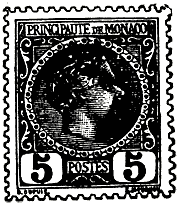Role of the Media
Communications
by Donald S. Frazier from The United States and Mexico at War
 The war between the United States and Mexico witnessed the first sizable use of technological innovations at the strategic level. Nowhere was this more evident than in communications. Mounted couriers still carried battle reports and dispatches tucked safely inside saddlebags, but in the period from 1821 to 1854, steamboats, railroads, and telegraphs advanced critical communications at speeds before unimagined.
The war between the United States and Mexico witnessed the first sizable use of technological innovations at the strategic level. Nowhere was this more evident than in communications. Mounted couriers still carried battle reports and dispatches tucked safely inside saddlebags, but in the period from 1821 to 1854, steamboats, railroads, and telegraphs advanced critical communications at speeds before unimagined.
Tactical communications for all armies in this era remained unchanged from communications in the earliest days of warfare. Generals conducted their battles from central locations in proximity to the frontlines, within eyesight and earshot of the actual fighting. Drums, bugles, and flags marked the progress of units in combat. Units at distant locations received written or verbal orders delivered by officers and couriers who, as often as not, held their position on the general staff not because of formal training or particular expertise but because of their connections to the commanding officer. The age of professional staff training was far in the future. Even so, these volunteer messengers provided the critical link between the commander and his command. For many armies of this period, including Mexico's, this hand-carried method of information exchange extended to strategic communications as well.
 The United States increasingly gained a clear advantage over its adversaries in its application of technology to the issue of communications. In the United States, mechanical devices replaced reliance on bone, muscle, and sinew. When a dispatch arrived at a depot or supply base far to the rear of the army in the field, it often found its way to fast steamships or courier vessels that in turn moved the message to an inland port, rail terminal, or telegraph post. Steamboats had plied U.S. inland waters since 1807. This technological conquest of river currents allowed for relatively rapid transfer of materials and information both upstream and downstream, turning streams and waterways into natural highways. After 1826, railroads began to augment riverine communications.
The United States increasingly gained a clear advantage over its adversaries in its application of technology to the issue of communications. In the United States, mechanical devices replaced reliance on bone, muscle, and sinew. When a dispatch arrived at a depot or supply base far to the rear of the army in the field, it often found its way to fast steamships or courier vessels that in turn moved the message to an inland port, rail terminal, or telegraph post. Steamboats had plied U.S. inland waters since 1807. This technological conquest of river currents allowed for relatively rapid transfer of materials and information both upstream and downstream, turning streams and waterways into natural highways. After 1826, railroads began to augment riverine communications.
In 1844, Samuel Morse sent the message "What hath God wrought" over the copper wires of a device he dubbed the telegraph. With the perfection of this invention, communications took a major leap forward, with corresponding implications for strategic and commercial applications. One military observer noted that, in the past, innovation had occurred slowly and at intervals, while in the first half of the nineteenth century, changes occurred at an alarming rate. Now, ten years time marked "an epoch in the onward progress of modern invention and improvement. Even five years may modify, materially, plans of defense now reputed wisest and most indispensable." One sound strategic plan could be compromised or undone by the rapid transfer of information. By 1850, writer Richard S. Fisher exclaimed, "We travel by steam and converse by lightning."
The implications these innovations held for the U.S.-Mexican War were profound. In the United States, news from the front arrived in just a few days, and politicians and generals alike could react rapidly to changing circumstances. The public kept abreast of news and supported the war to a greater or lesser degree based on the latest reports from the front. Ultimately, materials and manpower arrived from remote locations in the United States at a steady and reliable pace. All of these advantages allowed the nation to conduct a foreign war far removed from its centers of population.





